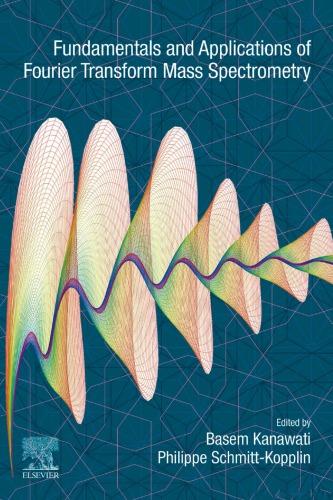Listofcontributors
MarcinBanach
InstituteofChemistryandInorganicTechnology,TadeuszKo ´ sciuszkoCracow UniversityofTechnology,Cracow,Poland
BirendraK.Bindhani
SchoolofBiotechnology,KIITUniversity,Bhubaneswar,Odisha,India
AlexisCatala
DepartmentofPhysicsandAstronomy,UniversityofTexasatSanAntonio,San Antonio,TX,USA
DaqinChen
CollegeofMaterialsandEnvironmentalEngineering,HangzhouDianzi University,Hangzhou,P.R.China;StateKeyLaboratoryofStructural Chemistry,FujianInstituteofResearchontheStructureofMatter,CAS, Fuzhou,P.R.China
JiafuChen
DepartmentofChemicalEngineering,RyersonUniversity,Toronto,ON,Canada
MansiChitkara
NanomaterialsResearchLaboratories,ChitkaraUniversity,Punjab,India
YaserDahman
DepartmentofChemicalEngineering,RyersonUniversity,Toronto,ON,Canada
SubashDas
FormulationandDevelopmentProductUnit,KemwellBiopharmaPvtLtd, Bangalore,India
SoniaDhiman
ChitkaracollegeofPharmacy,ChitkaraUniversity,Punjab,India
MingyeDing
CollegeofMaterialsandEnvironmentalEngineering,HangzhouDianzi University,Hangzhou,P.R.China
GaneshElango
ChemistryofHeterocycles&NaturalProductResearchLaboratory,Organic ChemistryDivision,SchoolofAdvancedSciences,VITUniversity,Vellore,Tamil Nadu,India
BabitaGarg
UniversityInstituteofPharmaceuticalSciences,UGCCentreofAdvanced Studies,PunjabUniversity,Chandigarh,India
IevgenVolodymyrovychPylypchuk
NanomaterialsDepartment,ChuikoInstituteofSurfaceChemistryofNational AcademyofSciencesofUkraine,Kiev,Ukraine
SelvarajMohanaRoopan
ChemistryofHeterocycles&NaturalProductResearchLaboratory,Organic ChemistryDivision,SchoolofAdvancedSciences,VITUniversity,Vellore,Tamil Nadu,India
NiranjanRout
DepartmentofOnco-Pathology,A.H.RegionalCancerCentre,Cuttack, Odisha,India
InderjeetSinghSandhu
NanomaterialsResearchLaboratories,ChitkaraUniversity,Punjab,India
NaderA.Shehata
TheBradleyDepartmentofElectricalandComputerEngineering(ECE), VirginiaPolytechnicInstituteandStateUniversity,Blacksburg,VA,USA; DepartmentofEngineeringMathematicsandPhysics,FacultyofEngineering, AlexandriaUniversity,Alexandria,Egypt;CenterofSmartNanotechnologyand Photonics(CSNP),SmartCriticalInfrastructure(SmartCI)ResearchCenterof Excellence,AlexandriaUniversity,Alexandria,Egypt
BhupinderSingh
UniversityInstituteofPharmaceuticalSciences,UGCCentreofAdvanced Studies,PunjabUniversity,Chandigarh,India;UGCCentreofExcellencein ApplicationsofNanomaterials,Nanoparticles&Nanocomposites(Biomedical Sciences),PunjabUniversity,Chandigarh,India
NarinderSingh
DrSSBhatnagarUniversityInstituteofChemicalEngineering&Technology, PunjabUniversity,Chandigarh,India
ThakurGurjeetSingh
ChitkaracollegeofPharmacy,ChitkaraUniversity,Punjab,India
NammalwarSriranganathan
DepartmentofBiomedSciencesandPathobiology(DBSP),Virginia PolytechnicInstituteandStateUniversity,Blacksburg,VA,USA;Centerfor MolecularMedicineandInfectiousDiseases(CMMID),VirginiaPolytechnic InstituteandStateUniversity,Blacksburg,VA,USA
BaselAl-ChikhSulaiman
DepartmentofChemicalEngineering,RyersonUniversity,Toronto,ON,Canada
SvitlanaPetrivnaTuranska
DepartmentofBiomedicalProblemsofSurface,ChuikoInstituteofSurface ChemistryofNationalAcademyofSciencesofUkraine,Kiev,Ukraine
antimicrobialapproachestofighttheglobalcrisisofantibioticinefficiencyand emerginginfectiousdiseasescausedbyresistantpathogens.VolumeVIImoves ontoanotherkeybiomedicaldomain—cancertherapy.Thisvolume, NanobiomaterialsinCancerTherapy,describescurrentissuesofcancertherapy anddiscussesthemostrelevantfindingsregardingtheimpactofnanobiomaterials incancermanagement. MedicalImaging representsthefocusofVolumeVIII, whileVolumeIXdealswithapplicationsof NanobiomaterialsinDrugDelivery. VolumeX,entitled NanobiomaterialsinGalenicFormulationsandCosmetics, referstotheperspectiveshighlightedbytheutilizationofnanosizedfunctional biomaterialsinthedevelopmentofimproveddrugsandactiveprinciplesfordifferentbiomedicalindustries.Finally,VolumeXIisdedicatedtotheimpactof NanobiomaterialsinDentistry,whichcurrentlyrepresentsoneofthemostinvestigatedandcontroversialdomainsrelatedtothebiomedicalapplicationsofnanostructuredmaterials.
Duetotheirspecificorganization,eachvolumecanbetreatedindividuallyor asapartofthiscomprehensiveseries,whichaimstobringasignificantcontributiontothefieldofresearchandbiomedicalapplicationsofnanosizedengineered materials.
EcaterinaAndronescu
DepartmentofScienceandEngineeringofOxideMaterialsandNanomaterials, FacultyofAppliedChemistryandMaterialsScience, UniversityPolitehnicaofBucharest,Bucharest,Romania
Fabricationandself-assemblyof nanobiomaterials:applicationsof nanobiomaterials
ABOUTTHESERIES(VOLUMESI XI)
Theincreasedfabricationofnanosizedmaterialswithapplicationsinthebiomedicalfieldbyusingbiomimeticandbio-inspiredprocessesandformulationshas recentlyledtoanewconcept,callednanobiotechnology.Thiscomplexresearch andapplicativefieldbringstogethersignificantknowledgefromphysical,chemical,biological,andtechnologicalsciences.
Medicalapplicationsofnanobiomaterialsrangefromthedevelopmentofadequatescaffoldsfortissueengineeringtotherapeuticnanostructures,suchastargeteddrugdeliverysystems.Thepurposeofthismultivolumesetentitled ApplicationsofNanobiomaterials istoofferabroad,updatedandinterdisciplinarypointofviewregardingtheapplicationofthese“materialsofthefuturemedicine,”startingwiththeirfabrication,specificengineeringandcharacterization, andendingwiththemostinvestigatedapplicationssuchastissueengineering, antimicrobial,andcancertherapies,andthedevelopmentofdifferentmedicaland cosmeticuseproducts.Thesebooksbringtogethertheworkofoutstandingcontributorswhohavesignificantlyenhancedthebasicknowledgeandapplicativeconceptsofthisresearchfieldintheirrespectivedisciplines.
Themultivolumesetentitled ApplicationsofNanobiomaterials contains165 chapters,organizedinto11volumeswhicharereadytopresentanoveland up-to-dateapproachrelatedtothisnoveldomaindevelopedinthelastyears.Each chapterwascarefullycomposedandillustratedtohighlighttherelevanceof nanobiomaterialsonmostbiomedicalfields,revealingthemostrecent applicationsonaspecificdomain.Theseriesrepresentsagreatmaterialforthe academiccommunity,startingwithundergraduateandpostgraduatestudents, researchers,engineers,andmedicaldoctors,andalsoforpharmaceutical companiesandinnovativebiotechnologicalsettings.
These11volumescoveralmostallaspectsrelatedtotheapplicationsofnanobiomaterialsandarenamedasfollows:
VolumeI:FabricationandSelf-AssemblyofNanobiomaterials
VolumeII:EngineeringofNanobiomaterials
VolumeIII:SurfaceChemistryofNanobiomaterials
VolumeIV:NanobiomaterialsinHardTissueEngineering
VolumeV:NanobiomaterialsinSoftTissueEngineering
UCnanoparticles.Intheend,thischapterpointsoutthechallengesandperspectivesofthedevelopingimpurity-dopingstrategy.
Ioelovichetal.,inChapter9, Nanocellulose—fabrication,structure,properties,andapplicationintheareaofcareandcure,discussmethodsofpreparation, structure,properties,andapplicationsofvariouskindsofnanocellulose.The authorsdemonstratethataftertheintroductionofspecificfunctionalgroups,the cellulosenanocarrierscanbeobtainedandusedtojoiningvarioustherapeutically activesubstances(proteolyticenzymes,aminoacids,antioxidants,hemostatic drugs,etc.),whichexpandapplicationareasofnanocelluloseinthecareandcure branches.
Gorbyketal.,inChapter10, Magnetosensitivenanocompositeswithhierarchicalnanoarchitectureasbiomedicalnanorobots:synthesis,properties,andapplication,presentnewconceptsofthechemicaldesignofmagneticallysensitive nanocompositeswithmultilevelhierarchicalarchitectureandfunctionsofmedicobiologicalnanorobotsin:recognitionofmicrobiologicalobjectsinbiological media;targeteddrugdeliveryintotargetcellsandorgans,anddeposition;complextreatmentwithchemo-,immuno-,radio-,hyperthermicmethodsandrealtimediagnostics;adsorptionofresidualcelldebrisandremovingthemfromthe bodywiththehelpofanexternalmagneticfield.
Hassounahetal.,inChapter11, Designingandtestingsingletabletfortuberculosistreatmentthroughelectrospinning,revealthecurrentknowledgeabout tuberculosisdrugs(pyrazinamide,isoniazid,clarithromycin,andstreptomycin) loadedonpoly(ε-caprolactone),poly(ethyleneoxide),andpoly(vinylalcohol) nanofiberstodesignasingletabletsuitableforHIVpatients.
Banachetal.,inChapter12, Synthesis,characteristics,andbiocidalactivity ofsilvernanoparticles,reportanup-to-dateoverviewaboutthefabricationand applicationsofsilvernanoparticlesinthebiomedicalfield.
Singhetal.,inChapter13, Nanobiomaterials:applicationsinbiomedicine andbiotechnology,reviewthefabricationofnanoscalebiomaterialsformedical andbiotechnologicalapplications.Nanoscalemoleculartoolsinnanobiomedicine areusedfordiagnosticpurposesandimprovementofhumanhealth.Pivotalstudies,bothnonclinicalandclinical,intheaspectsofsafetyandtolerancearethe necessityofrecenttimesinordertoformulatetheirpotentialcommercial application.
Hughesetal.,inChapter14, Control,designandunderstandingofmolecular self-assembly,discussaboutself-assemblies.Essentially,thenanostructurebuilds itselfstartingwithconstructionoftheindividualbuildingblocks,whichhavethe finalstructureencodedintotheirproperties,andendingwithacomplete structure.Nanoengineeringforbiomedicalapplicationsisessentialtothe developmentoftissueengineeringandregenerativemedicinebecausethesizeof mostbiologicalfunctionalunitsisintheorderofnanometers.Forexample, proteins,nucleicacids,viruses,andcellularmembranespossesshighlyprecise arrangementsonthenanoscalederivedfromthemolecular-levelstructure.
theory.Thus,theyhaveamoreadvancedtechnologyandmoreapplicationsduetodifferentphysicalandchemicalproperties.Thephysicalpropertiesofmagneticnanoparticlescanbedeterminedbythechemicalcompositions,thetypeandthedegreeof defectivenessofthedomainstructureincludingtheparticlesizeandshape,andthe interactionoftheatomsamongthemolecularstructure.However,duetothelimitationsofpresenttechnology,theabovefactorscannotbecontrolledallthetimeduring thesynthesis.Furthermore,therelationshipbetweenthepropertiesandthestructure areunknown,sothesametypeofmaterialwithdifferentconcentrationscouldhave largedifferences.Eventhoughmagneticnanoparticlesarebasicallymetalswithmagnetism,livingcreaturesalsohavemagneticnanoparticleswithintheirbodies.For example,migratorybirdsandfishhavemagneticnanoparticlesinsidetheirsensesystemstoguidethemduringtheirmigration betweensouthandnortheveryyear.Even humanbeingshavemagneticnanoparticlesinsidetheirbrains.Itisestimatedthatthe humanbrainincludesabout100millionmagneticnanoparticlespergramoftissue.So magneticnanoparticlesarenotjustascience,butarerelatedtoourdailylifeandaffect itinmanydifferentways.
Therearemanykindsofmagneticnanoparticlesduetodifferentchemical properties:metals,rareearthmetals,oxidationofmetallicnanoparticles,andmagneticalloys.Sincethemetalnanoparticlesincludemostofthemetalmagnetic materialsandoxidationofmetallicnanoparticles,thefollowingsectionwillfocus onthedifferentmagneticalloys(Gubin,2009).
• Fe CoAlloys:SinceCoandFearebody-centeredcubicstructuresina nanoparticle,thealliedorderofbothmetalsisverysoftandverysuitableto berawmaterialfornanoparticles.ThemaximumconcentrationofCointhe alloyis35%.ThisisthesaturationconcentrationofCo.Therelatedmagnetic propertiesalsoincreasewiththemixinglevel(Gubin,2009).
• Fe NiAlloys:SamplesofFeandNiinexperimentscanhavenonmagneticor magneticsoftferromagnets.Forthealloycompoundofironandnickel,they haveamuchlowersaturationmagnetizationcomparedtopuresamplesof eachmetal.Forexample,whenwehave37%ofNi,ithasalowcuriepoint andanFCCstructure.Theoreticalcalculationsestimateamorecomplicated magneticstructureforthesetypesofalloysduetothedifferentcombinations.
• Fe PtAlloys:Becauseofthewideapplicationontheinformationrecording densityofmaterials,thesetypesofalloysarebeingstudiedalotrecently. Theyhavetheface-centeredtetragonalstructureandthusobtainaunique propertyofrecordingadvantageoflargecoercivitywheninroomtemperature, nomatterhowsmalltheparticlesare.Preparedbyjointthermolysisinthe presenceofoleicacidandoleylamine,FE Ptnanoparticleshaveanarrow sizedistribution.Afterfurtherheating,aprotectivefilmisformedonthe surfaceofalloys,whichremainaboutthesamesize.
• Co PtAlloys:Inahigh-densityinformationstoragefield,nanoparticlesof Co Pthavealotofadvantagesduetotheirform,size,andcrystalstructure, whichmakesthemchemicallystableandmagneticallycrystalline.Oneofthe
FIGURE1.3
TheprocessofformationofFeoxidenanocrystals(Luetal.,2007).
nanoparticleswillprecipitateoutfromthesolutions. Figure1.3 demonstrates theprocessofthermaldecompositions.
Figure1.3 showstheTEMimagesofsynthesizednanocrystalsatdifferent reactiontimes.Atthebeginning,thecrystalsareinrandomarrangedorders andwithrandomsizearrangements.Afterfurtherheating,theorderisclearat theendwithregularsizeandshape.
• Microemulsion:Amicroemulsionprocessistheprocessthattwoimmiscible liquidswillgothroughadispersionstagewherebothliquidsarestabilizedby thesurfactantmolecules.Forexample,oilandwateraretwoimmiscible liquids.Thedispersephaseofoilwillbesurroundedbysurfactantmolecules. Withthedesiredreactantsinthesolution,themicrodropletswillformand thenbreaktoprecipitateinthemicelles.Acetoneandethanolcanbeusedas solventformicroemulsionstoextracttheprecipitatebychangingthestructure.
Figure1.4 showsthenanorodsynthesisprocess(Luetal.,2007).
From Figure1.4,wecanseethedifferentcompoundsandstructuresthatare formedbythedifferentrawmaterials.Thesteroidacidproductsarestraightstructures,whiletheoctanoicacidproductsareshortandthick.
1.2.2 METALNANOPARTICLES
1.2.2.1 Synthesismethods
Ingeneral,theproductionofmetallicnanoparticlescanbecategorizedintotwo differentkinds:top-downandbottom-up.Thefirstthreemethodsexplainedbelow fallunderthebottom-upmethodinwhichatomsareassembledintonanoparticles, andthelastmethod(4)isthetop-downapproachinwhichnanoparticlesarecut fromalargerstructure(BlackmanandBinns,2008).
1. Productionofpreformednanoparticlesinthegasphase:Severalmethods havebeenfoundtoproducegas-phasenanoparticles.However,theyall involvetheproductionofasupersaturatedmetalvaporthatcondensesinto particles.Thismethodisthemostflexibletechniqueforthesynthesisofmetal nanoparticlesanditisthewaytoproducetightlymass-selectednanoparticles ofvirtuallyanymaterialoralloyinenvironmentsrangingfromfreeparticles
FIGURE1.5
(a)Productionofgas-phaseparticles.(b)Depositionandself-assemblyonsurfaces. (c)Wetchemicalmethods.(d)Top-downmethods(BlackmanandBinns,2008).
thefreeenergyduetoanewsurfacecreated(Blackman,2008).Themaximum freeenergyforasphericalparticleistheactivationenergyfornucleation.This canbecalculatedfromthefollowingequation:
where: V isthemolecularvolume; r istheradiusofthenuclei; kB isthe Boltzmannconstant; S isthesaturationratio;and γ issurfacefreeenergyper unitsurfacearea.Thecriticalnucleisize, r ,isobtainedfromdΔG/dr 5 0 (Blackman,2008):
FIGURE1.6
(a)TheconceptofmonodispersecolloidgrowthofLaMermodel.(b)Typicalsynthetic apparatus(Blackman,2008).
Accordingtothisequation,alargersaturationratiowillleadtoasmall criticalnucleisize.
• Growth:Thegrowthprocessisformedfromthesolutionandtakesplacevia depositionofthesolublespeciesontothesolidsurface.Thisprocesscomes afternucleiareformed.Nucleationstopsinthecasewhereconcentrationfalls belowthecriticallevel.However,thegrowthoftheparticlescontinues throughmolecularadditionuntiltheequilibriumconcentrationofthespecies isreached(Blackman,2008).Ifbothnucleationandgrowthreactionsare stoppedrapidly,thereisapossibilityofobtainingamonodispersesize distribution.Analternativestrategyforamonodispersedistributionisto maintainasaturatedconditionthroughoutthereactionbybuildingupthe concentrationofmetalionsthroughrepeatedinjectionsofthemetalprecursor(s) (Blackman,2008).Animportantfactorthatmustbeconsideredinthis processissecondarygrowth.Thisincludestheaggregationofparticleswith others.Thissecondarygrowthisconsideredtobefasterthanbymolecular additionthathappensthroughthecombinationofstableparticleswithsmaller unstablenuclei(Yuetal.,2008).Theproducednanoparticlesaresmalland thermodynamicallyunstable.Therearetwowaystostabilizetheseparticles, eitherbyaddingsurface-protectingreagentssuchasinorganicligandsor









